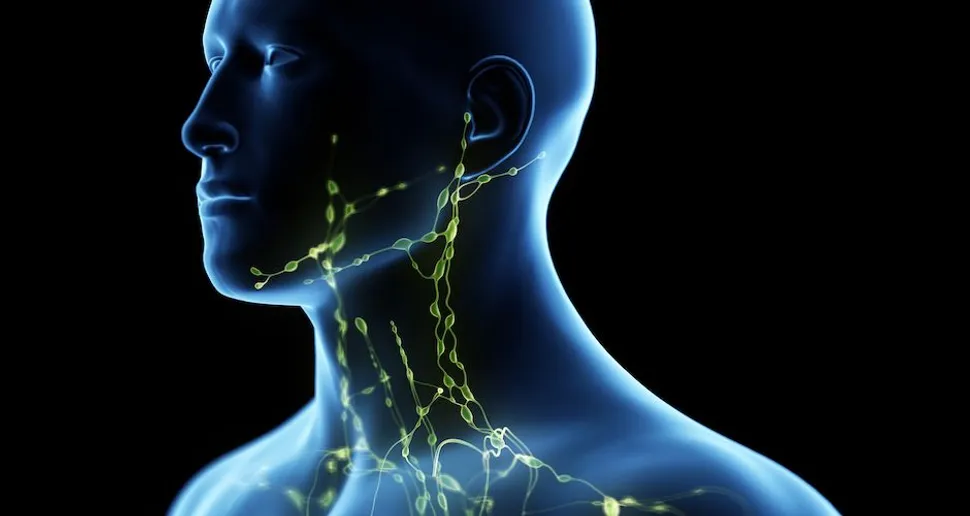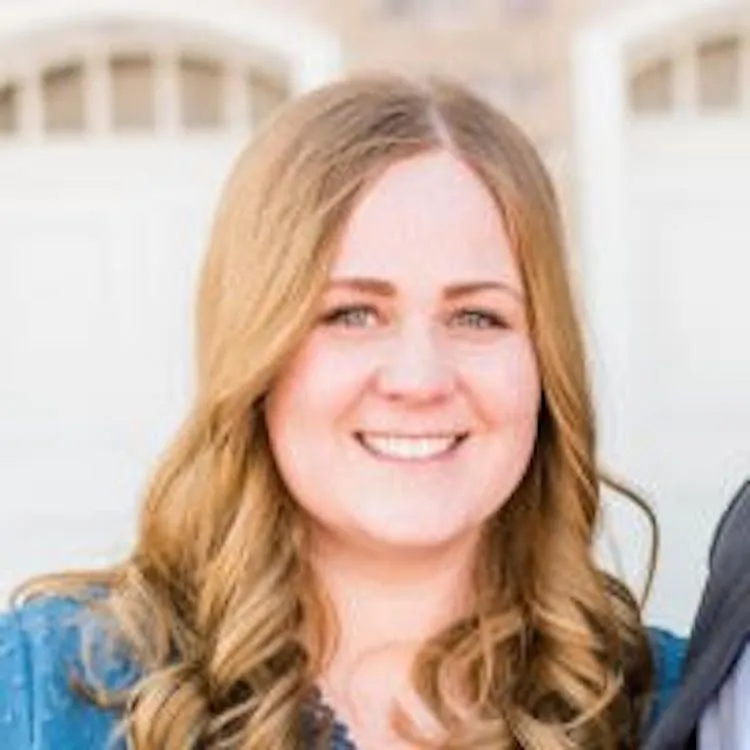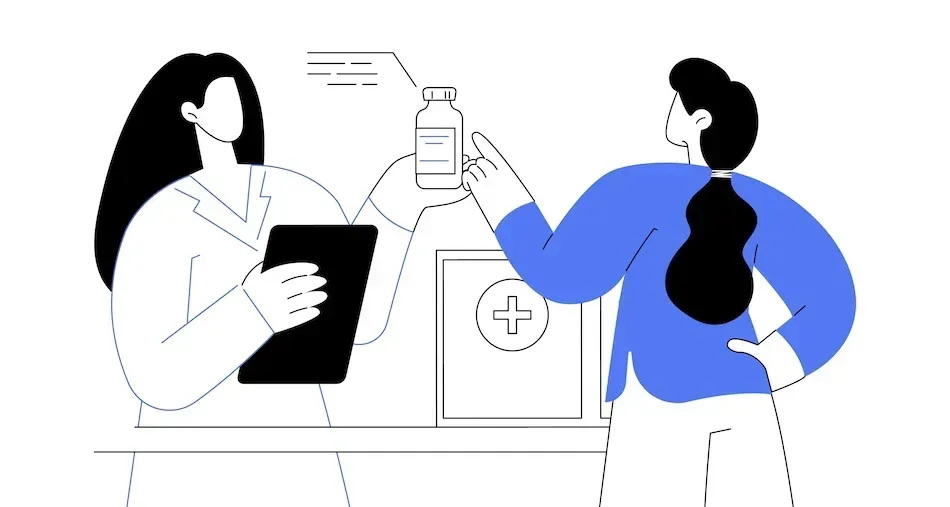Tests for CLL Patients: Lymph Node Biopsy

CLL cells are often found in the lymph system. If the cancer cells build up in lymph nodes, it can cause them to swell. A CLL patient’s doctor may decide to examine a sample of the patient’s lymph nodes using a lymph node biopsy if:
- The doctor is uncertain about the diagnosis after blood work alone and wants more information
- To check for a rare disease progression of CLL into diffuse large B-cell lymphoma (Richter's Transformation)
Types of Lymph Node Biopsies
If the CLL patient’s doctor determines that they do need to analyze a patient’s lymph node, the patient can expect to receive an excisional lymph node biopsy. This means a full lymph node is removed for examination. If the lymph node is close to the skin, a local numbing solution is applied, a small cut is made into the skin, the desired lymph node is snipped out, and then the area is closed back up with stitches. If the needed lymph node is deeper in the body, general anesthesia is used for the surgery. Patients generally go home on the same day of the procedure.
If surgery is not possible such as when the lymph node is in a difficult-to-reach spot near important nerves or blood vessels, the patient’s doctor may use a thin needle to remove fluid and cells from the lymph node (fine needle aspiration (FNA) or core needle biopsy) instead of an excisional lymph node biopsy.
An excisional lymph node biopsy is preferred over other types of lymph node biopsies like FNA for CLL patients because it provides the most comprehensive sample to analyze.
Patient Preparation
- Inform your doctor about any medications or supplements you're taking, as some might need to be stopped before the procedure such as blood thinners
- Fasting may be required if sedation or general anesthesia is used
- Wear comfortable clothing. You might be asked to wear a hospital gown
- If you and your doctor have determined you’ll be receiving general anesthesia, prepare for someone to drive you home after the procedure (ask your doctor about any questions you have related to anesthesia or sedation options)
Procedure Steps
- Anesthesia: The patient receives either local anesthesia to numb the biopsy area, or general anesthesia to put them to sleep, depending on the location of the lymph node to be removed and the patient’s preference
- Incision and lymph node removal: A small cut is made in the skin above the lymph node. The lymph node is then removed using surgical equipment
- Site closure: The incision is closed with either absorbable sutures, steri-strips, or skin sutures. Your doctor will tell you which closure technique was used and information about aftercare instructions
Aftercare
- Keep the wide top dressing bandage on and dry for 24 hours following the procedure. After 24 hours, you can remove the top dressing bandage and shower, you do not need to reapply another top dressing bandage after the shower. Underneath the top dressing bandage, you will either have steri-strips or another type of skin suture. Leave the steri-strips on until they fall off. When washing the area, do not scrub and do not allow the area to soak. Gently rinse the area and pat dry
- Avoid touching or picking at the wound site and its sutures as it heals. The incision site takes about two weeks to fully heal
- The pain following the lymph node biopsy is typically mild and can last for a few days after the procedure. Talk to your doctor about your level of pain. If it is high, they can prescribe higher-dose pain relievers. If the pain is mild, your doctor may recommend to take an over-the-counter pain reliever that does not cause blood thinning (reduce the risk of excessive bleeding) like Tylenol
- Be alert for signs of infection like increased redness, swelling, pus, or if you develop a fever. Contact your doctor if you experience any of these symptoms
- Avoid strenuous activity while the biopsy site heals
Test Results
Typically, CLL patients can expect their test results within two weeks. The doctor who requested the test will discuss the results with you.
The things they are looking for with this test are the presence of CLL cells in the lymph nodes and if the CLL cells have morphed into a rare aggressive type of lymphoma known as diffuse large B-cell lymphoma (Richter's Transformation, DLBCL).
These findings will help clarify what type of treatment is needed and when to start treatment. Lymph nodes enlarged with CLL cells qualify a patient to receive targeted therapies like venetoclax or a BTK inhibitor. If the cancer cell has further mutated and become DLBCL, more aggressive treatments like chemotherapy may be needed to kill the cancer cells.
In conclusion, a lymph node biopsy is a helpful tool that can provide further insight into a CLL patient’s disease state than based on blood work alone. Although the idea of undergoing a biopsy can be daunting, understanding the process can help reduce anxiety and prepare patients for a better experience.
CLL cells are often found in the lymph system. If the cancer cells build up in lymph nodes, it can cause them to swell. A CLL patient’s doctor may decide to examine a sample of the patient’s lymph nodes using a lymph node biopsy if:
- The doctor is uncertain about the diagnosis after blood work alone and wants more information
- To check for a rare disease progression of CLL into diffuse large B-cell lymphoma (Richter's Transformation)
Types of Lymph Node Biopsies
If the CLL patient’s doctor determines that they do need to analyze a patient’s lymph node, the patient can expect to receive an excisional lymph node biopsy. This means a full lymph node is removed for examination. If the lymph node is close to the skin, a local numbing solution is applied, a small cut is made into the skin, the desired lymph node is snipped out, and then the area is closed back up with stitches. If the needed lymph node is deeper in the body, general anesthesia is used for the surgery. Patients generally go home on the same day of the procedure.
If surgery is not possible such as when the lymph node is in a difficult-to-reach spot near important nerves or blood vessels, the patient’s doctor may use a thin needle to remove fluid and cells from the lymph node (fine needle aspiration (FNA) or core needle biopsy) instead of an excisional lymph node biopsy.
An excisional lymph node biopsy is preferred over other types of lymph node biopsies like FNA for CLL patients because it provides the most comprehensive sample to analyze.
Patient Preparation
- Inform your doctor about any medications or supplements you're taking, as some might need to be stopped before the procedure such as blood thinners
- Fasting may be required if sedation or general anesthesia is used
- Wear comfortable clothing. You might be asked to wear a hospital gown
- If you and your doctor have determined you’ll be receiving general anesthesia, prepare for someone to drive you home after the procedure (ask your doctor about any questions you have related to anesthesia or sedation options)
Procedure Steps
- Anesthesia: The patient receives either local anesthesia to numb the biopsy area, or general anesthesia to put them to sleep, depending on the location of the lymph node to be removed and the patient’s preference
- Incision and lymph node removal: A small cut is made in the skin above the lymph node. The lymph node is then removed using surgical equipment
- Site closure: The incision is closed with either absorbable sutures, steri-strips, or skin sutures. Your doctor will tell you which closure technique was used and information about aftercare instructions
Aftercare
- Keep the wide top dressing bandage on and dry for 24 hours following the procedure. After 24 hours, you can remove the top dressing bandage and shower, you do not need to reapply another top dressing bandage after the shower. Underneath the top dressing bandage, you will either have steri-strips or another type of skin suture. Leave the steri-strips on until they fall off. When washing the area, do not scrub and do not allow the area to soak. Gently rinse the area and pat dry
- Avoid touching or picking at the wound site and its sutures as it heals. The incision site takes about two weeks to fully heal
- The pain following the lymph node biopsy is typically mild and can last for a few days after the procedure. Talk to your doctor about your level of pain. If it is high, they can prescribe higher-dose pain relievers. If the pain is mild, your doctor may recommend to take an over-the-counter pain reliever that does not cause blood thinning (reduce the risk of excessive bleeding) like Tylenol
- Be alert for signs of infection like increased redness, swelling, pus, or if you develop a fever. Contact your doctor if you experience any of these symptoms
- Avoid strenuous activity while the biopsy site heals
Test Results
Typically, CLL patients can expect their test results within two weeks. The doctor who requested the test will discuss the results with you.
The things they are looking for with this test are the presence of CLL cells in the lymph nodes and if the CLL cells have morphed into a rare aggressive type of lymphoma known as diffuse large B-cell lymphoma (Richter's Transformation, DLBCL).
These findings will help clarify what type of treatment is needed and when to start treatment. Lymph nodes enlarged with CLL cells qualify a patient to receive targeted therapies like venetoclax or a BTK inhibitor. If the cancer cell has further mutated and become DLBCL, more aggressive treatments like chemotherapy may be needed to kill the cancer cells.
In conclusion, a lymph node biopsy is a helpful tool that can provide further insight into a CLL patient’s disease state than based on blood work alone. Although the idea of undergoing a biopsy can be daunting, understanding the process can help reduce anxiety and prepare patients for a better experience.

about the author
Megan Heaps
Megan joined HealthTree in 2022. She enjoys helping patients and their care partners understand the various aspects of the cancer. This understanding enables them to better advocate for themselves and improve their treatment outcomes.
More on Navigating Your Health
Trending Articles

Get the Latest Chronic Lymphocytic Leukemia Updates, Delivered to You.
By subscribing to the HealthTree newsletter, you'll receive the latest research, treatment updates, and expert insights to help you navigate your health.
Together we care.
Together we cure.
3x Faster.









